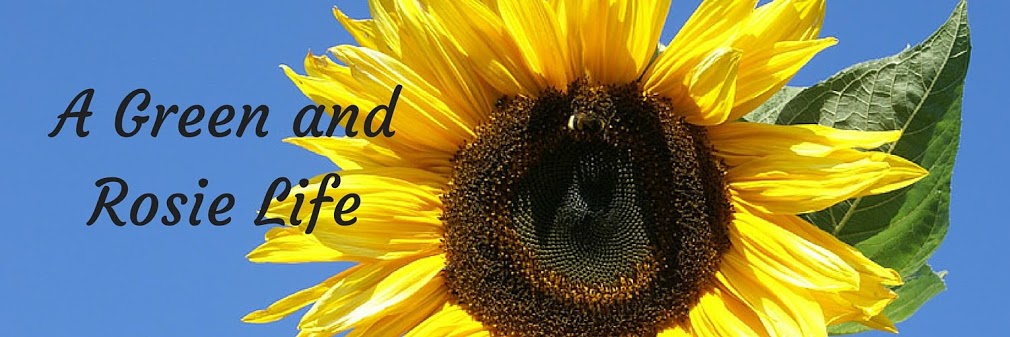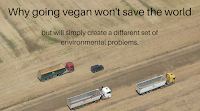Our kettle died recently and when I brought home the new one it got me thinking about how we need to have a totally radical and innovative new at packaging. This is what my one kettle "needed":
- A cardboard box
- 2 shaped cardboard sections to secure the kettle in the box.
- 2 plastic bags (one for the kettle and one for the kettle base)
- A 60 page safety instruction leaflet in 19 different languages
- A guarantee certificate, approx equivalent to A3 size and also in 19 different languages (not shown, I only found it later inside the safety instruction booklet).
On first impression this might appear to be relatively sustainable packaging with minimal plastic but sustainability is more than about replacing plastic with other products. It is about reducing unnecessary single use items of all types and where this isn't possible making them more sustainable.
How could this packaging be improved?
1. The box and moulded sections
Cardboard comes with it's own set of environmental problems and is not the ideal resource for single use packaging. High energy levels are needed to grow, fell and process the trees into cardboard or to recycle old cardboard into new. Making cardboard involves more water than making the same amount of plastic and involves considerable chemical use. On the plus side cardboard is relatively easy to recycle and is accepted by almost all local authorities ... but it does have a finite recycling life before it is too poor quality to make new cardboard. If it does end up in the environment it will break down far quicker than plastic but in landfill it will produce methane as it degrades.
However, the problem here is not so much the material the packaging is made from but the fact it is single use. In order to transport my new kettle from factory to shop to my home it is deemed necessary to put it in a box with moulded sections, plastic bags, a safety booklet and a guarantee certificate. All single use. No other kettle will ever make use of this packaging and once I've unpacked it at home the box's short life is finished (unless I can use it in some way myself). And I reckon I can safely say no-one will read all 60 pages of the multi language safety booklet and guarantee. No-one.
A solution.
It's time to think outside of the box. We need manufacturers to be looking at ways to transport their goods in reusable packaging and shops to encourage their customers to say no to the box altogether (a kettle would quite happily go in a normal shopping bag). Alternatively shops could supply standard plain boxes for transporting goods home for which customers pay a deposit. Now it is a reusable box taking many kettles home thus significantly reducing the carbon footprint of what was previously a single use box.
Arguments against reusable boxes
i. The box will soon become tatty.
Sorry but get over it. If it is simply there to protect your kettle until it gets home then a bit of a tatty edge is irrelevant.
New packaging materials are being made all the time now that it is realised our current packaging is not sustainable. Once these become commercially available we may well be boxes that are almost immune to damage or could easily be recycled/composted once they are no longer the right size to package a particular item.
ii. It will cost me time and money to return the box.
- If you buy locally I am sure you'll be in the locality of the shop at some time in the near future and can return it ...
- Or a friend can ...
- Or central return points could be organised for packaging from a wide range of suppliers. Maybe even a chip in the box could facilitate returning the packaging to the right retailer. With a chip system in place couriers could take back packaging of products bought online and be able to redistribute them back to the manufacturer. .
2. The plastic bags
Does a kettle actually need these 2 bags? Manufacturers will probably argue that they protect the kettle but I am confident that with well made reusable boxes the plastic bags will become redundant.
3. 60 page safety leaflet in 19 different languages
When selling goods shops could email you the relevant literature or a link to where to find it online. If customers do not have internet access the shop could print out and give them the details in whichever language they ask for. No more 60 page booklets!
4. The guarantee
A till receipt should suffice or a simple online registration. This paper guarantee is just not needed.
Disclaimer and Summary
I am not a packaging expert and I do not have all the answers but I do know that we need to consign single use packaging to history and that there are plenty of more sustainable alternatives. And this thinking outside of the box needs to be applied across all aspects of our lives. We need to be much more innovative in our approach to tackling climate related problems so it is not simply the case of switching from one thing to another that may well have it's own set of environmental problems. What we actually need to be doing is fundamentally questioning how we live our lives and making radical changes. We need to be thinking outside of the box on everything, not just packaging.
And for those of you who dig in your heels and make excuses for rejecting changes I say this to you. Stop. Making. Excuses. It is the all too easy option to maintain the status quo but the key to providing a future for our children is based on our ability to evolve and embrace change, even if this means a bit more effort from each of us. I live in hope that history lessons of the future will look back on how we packaged goods today and laugh at how unimaginative and unsustainable we were. But only if we accept changes will those history lessons even be able to take place.
What do you think? Are you ready to think outside of the box?
Other posts you might like - click on the image to visit them:






I think the amount of packaging now a days is ridiculous. I completely agree about the plastic bags too. Are they really necessary??? We do have to think outside the box more especially the companies distributing products x
ReplyDeleteI think you're totally winning this argument. The unnecessary packaging these days is totally out of control. Also, if you just look at all the plastic packaged stuff. Why can sugar can be packed in paper bags? And dry pasta? and so on!!!
ReplyDeleteI couldn't agree more packaging those days is just too much! Brilliant post!
ReplyDelete